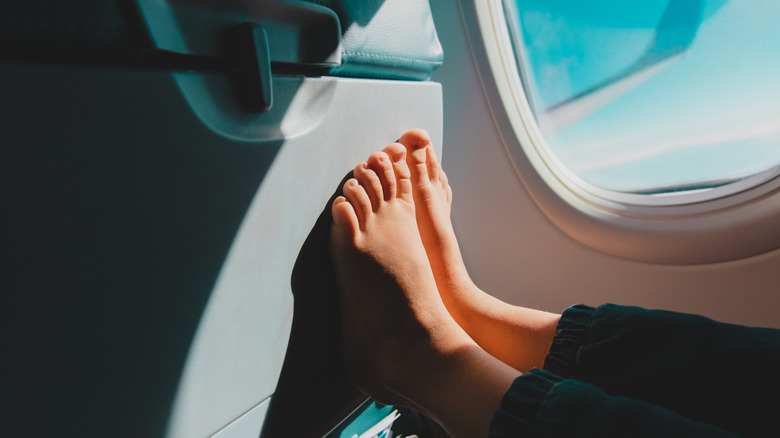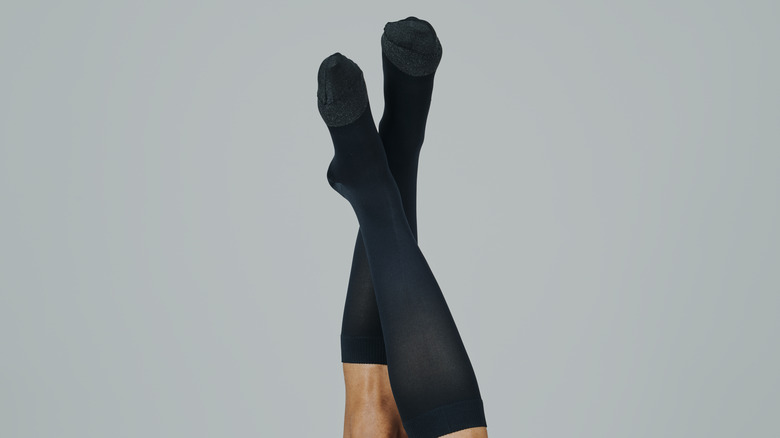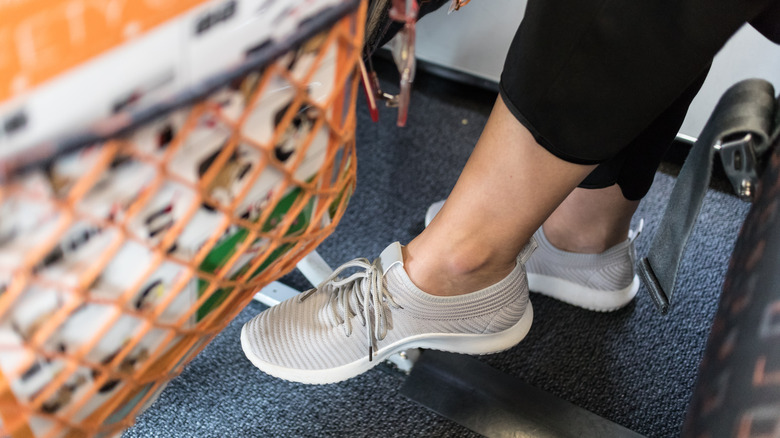Feet Swell When Traveling? Here's Why You Shouldn't Be Too Concerned
Ever taken your shoes off when flying only to find they're a bit more snug when you put them back on? If so, we first hope your shoes didn't stink, and we secondly want to assure you that inflight foot swelling isn't anything to worry about. While swelling feet and ankles can be a symptom of certain conditions, such as diabetes, everyone's feet tend to fatten up a bit during flights.
The official name for flying fat feet is dependent edema (or gravitational edema), and it's typically not a cause for concern. There are three main reasons your feet and ankle swell during flights: inactivity, gravity, and salt.
Sitting idle for hours on a plane will cause the blood to drain into your feet, and since you're not moving around, your blood isn't circulating as it normally would. The longer the flight, the more likely your feet will swell. Also, if you enjoy inflight snacks or meals, the higher sodium content can contribute to foot swelling.
Reduce swelling by staying active and hydrated
While feet swelling during a flight isn't typically a big deal, there are a few things you can do to prevent or reduce swelling. First, simply move your feet around a bit by rolling, flexing, and stretching your feet, ankles, and legs. On particularly long flights, walk around the cabin every hour or so (preferably with your shoes back on) to help your blood circulate.
To minimize swelling, you should also wear loose-fitting clothes, stay hydrated when flying, and avoid crossing your legs. Passing on alcoholic beverages and salty inflight snacks can also prevent swelling.
If you're prone to swelling or blood clotting due to an underlying condition, compression socks can help circulation and reduce the risk of swelling, deep vein thrombosis (DVT), or clotting. In some instances, it may be a good idea to speak with a doctor regarding a short-term prescription for a blood thinner.
Keep a lookout for a few signs
For the vast majority of flyers, plumper piggie syndrome just isn't a big deal. Typically, as your blood circulates, your feet will go back to normal size after walking around the airport a bit. However, there are a few signs that may indicate a cause for concern.
If your feet become painful, red, or stay swollen after a few hours, these symptoms may suggest blood clotting in the leg muscle or deep vein thrombosis. If you notice these symptoms, you'll want to quickly seek medical attention. If you do have diabetes, then you'll probably want to speak with a doctor before a long-haul flight. In rare cases, the doctor may recommend that you avoid long flights.
However, if you have no history of blood clotting or diabetes, then your swollen feet aren't anything to worry about. We'd just recommended wearing comfortable (and clean) shoes when you fly.


